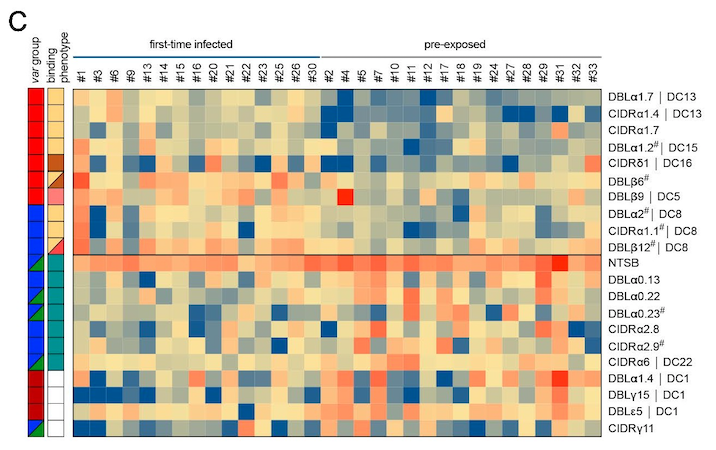Severe malaria in adults
Cross-institutional research group adds important molecular biology puzzle piece to explanation
Malaria is known to be a severe and fatal disease in Africa especially in children under five. Due to the much smaller number of cases, the causes of severe disease in adults have so far been insufficiently researched. A cross-institutional research group led by Dr. Anna Bachmann in the Department of Cellular Parasitology at the Bernhard Nocht Institute for Tropical Medicine (BNITM) has now been able to analyse the malaria cases of 32 adults who suffered from varying degrees of malaria. The researchers found important differences between children and adults in the binding of malaria-infected red blood cells to the blood vessel walls. The results were recently published in the scientific journal eLife.
The severe form of malaria is caused by the parasite Plasmodium falciparum and remains one of the leading causes of death worldwide. According to the World Health Organisation (WHO), more than 200 million people are infected every year and a child dies of malaria every two minutes. Among adults, pregnant women, non-immune travellers and people from areas with irregular transmission are particularly at risk of severe disease. Due to the low number of malaria cases, however, the causes have not yet been sufficiently researched.
Researchers from the Department of Cellular Parasitology at the Bernhard Nocht Institute for Tropical Medicine (BNITM) and the Centre for Structural Systems Biology (CSSB) as well as several international research groups were able to examine a total of 32 adult malaria patients, mostly travellers. These patients had different histories of infection and showed different degrees of clinical symptoms.
The team focused primarily on the mechanism by which malaria-infected red blood cells bind to the inner walls of human blood vessels. So-called adhesion proteins of the parasite (PfEMP1) play an important role here. These proteins can be very different and can attach themselves to different receptors of the vessel wall cells.


The researchers found that the same parasite adhesion proteins that are known from severe disease in children also play a central role in severely ill adults. In addition, however, a large number of parasite proteins were found to bind to a different vascular wall receptor in both severe and mild malaria. This receptor is also common in different tissues. "Our study is the starting point to characterize the different variants of the malaria parasite adhesion proteins in more detail and find out which tissue receptors they bind to. This is most likely the reason for the multisystemic disease symptoms of malaria and the varying severity of the disease in adults," says the last author Dr. Anna Bachmann.
Bachmann, Anna et al., "Common virulence gene expression in adult first-time infected malaria patients and severe cases". eLife (Apr. 28, 2021).https://doi.org/10.7554/eLife.69040
Contact person
Dr. Anna Bachmann
Research Group Leader
Phone : +49 40 285380-439
Fax : +49 40 285380-512
Email : bachmann@bnitm.de
Dr Eleonora Schoenherr
Public Relations
Phone : +49 40 285380-269
Email : presse@bnitm.de
Julia Rauner
Public Relations
Phone : +49 40 285380-264
Email : presse@bnitm.de






